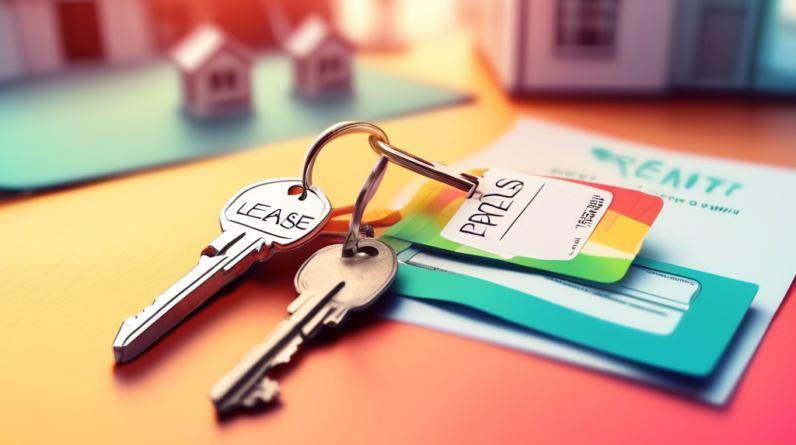
Understanding Rent-to-Own Agreements
Rent-to-own, also known as lease-option or lease-purchase, offers a unique path to homeownership, especially for those who might not qualify for a traditional mortgage right away. In essence, it blends renting with the possibility of future purchasing. You’ll agree with the owner to lease the property for a specific duration, with portions of your rent payments potentially going towards an eventual down payment. This arrangement grants you time to improve your credit score, save for a larger down payment, or simply experience living in the property and neighborhood before committing to ownership.
Evaluating a Rent-to-Own Property’s Fair Market Value: A Crucial Step
Before entering a rent-to-own agreement, determining the property’s fair market value is paramount. This step protects you from potentially overpaying and ensures you’re making a sound financial decision. Here’s a breakdown of how to approach this crucial evaluation:
1. Engage a Real Estate Agent
A local real estate agent well-versed in your target neighborhood can provide invaluable insights. They have access to recent comparable sales data, which forms the bedrock of market value assessments. This data encompasses recently sold properties similar in size, features, condition, and location to your desired rent-to-own property. By analyzing these comps, your agent can help establish a realistic market value range.
2. Leverage Online Valuation Tools
Numerous online platforms, such as Zillow, Redfin, and Realtor.com, offer automated home value estimates. While these tools are user-friendly and provide a general idea, treat their estimates with a degree of caution. They often rely on algorithms that may not capture the nuances of your specific property or local market fluctuations. Consider them as supplementary information rather than the definitive word on fair market value.
3. Conduct a Comparative Market Analysis (CMA)
Consider requesting a CMA from your real estate agent. A CMA dives deeper than automated valuations, taking into account recent sales data, active listings, and market trends specific to your chosen neighborhood. This comprehensive analysis offers a more accurate and localized perspective on the property’s worth.
4. Factor in Property Condition and Potential Repairs
The property’s current state plays a significant role in determining its fair market value. Are there any repairs needed? Are appliances outdated? Such factors can impact the property’s overall value. It’s advisable to conduct a home inspection to uncover any hidden issues that might require costly repairs down the line. Factor these potential costs into your evaluation to avoid unpleasant surprises later.
5. Assess the Neighborhood and Local Market Trends
The adage location, location, location holds true in real estate. Research the neighborhood’s desirability, proximity to amenities, schools, parks, and transportation. Additionally, delve into local market trends. Is it a buyer’s market or a seller’s market? Understanding these dynamics empowers you to negotiate a fair purchase price within the rent-to-own agreement.
Red Flags: When to Proceed with Caution
While rent-to-own can be an attractive option, certain red flags warrant caution. If the seller is hesitant or unwilling to disclose the property’s fair market value or provide documentation supporting their asking price, it’s a major warning sign. Similarly, if the offered purchase price significantly exceeds the property’s fair market value based on your research and professional assessments, it’s best to walk away. Remember, knowledge is power in real estate transactions. Arm yourself with accurate information to protect your financial interests.
The Benefits of Rent-to-Own
Rent-to-own arrangements offer several potential advantages, particularly for those who might face obstacles in securing a traditional mortgage:
1. Time to Improve Credit Score and Savings:
If your credit history needs a boost or you’re still building a substantial down payment, rent-to-own provides a valuable window. You can work on improving your creditworthiness and accumulating savings while living in the property.
2. Opportunity to Test Drive the Property:
Living in the property before committing to ownership allows you to experience the neighborhood, assess commute times, and uncover any hidden issues or maintenance needs.
3. Potential for Future Appreciation:
If the property appreciates in value during your lease term, you could lock in a purchase price below its future market worth, potentially building equity.
Points to Consider Before Entering a Rent-to-Own Agreement
1. Thoroughly Review the Contract:
Engage a real estate attorney to scrutinize the rent-to-own agreement’s terms and conditions. Pay close attention to clauses regarding purchase price, rent credits, maintenance responsibilities, and exit options.
2. Understand the Option Fee and Rent Premium:
Rent-to-own often involves an upfront option fee, granting you the exclusive right to purchase the property within a specified timeframe. Additionally, your rent payments might include a premium, a portion of which may contribute towards your eventual down payment. Ensure these terms are clearly outlined and agreeable to you.
3. Evaluate Your Financial Readiness:
Assess your budget, creditworthiness, and ability to secure a mortgage when the lease term concludes. Factor in potential interest rate fluctuations and ensure you’re financially prepared to transition into full ownership.
Conclusion: Making Informed Decisions
Evaluating a rent-to-own property’s fair market value is a critical step in navigating this unique path to homeownership. Engage professionals, leverage online resources, and conduct thorough due diligence to protect your financial interests. Remember, an informed decision is an empowered decision. By understanding the intricacies of rent-to-own agreements and conducting careful research, you can determine if this option aligns with your homeownership goals.







